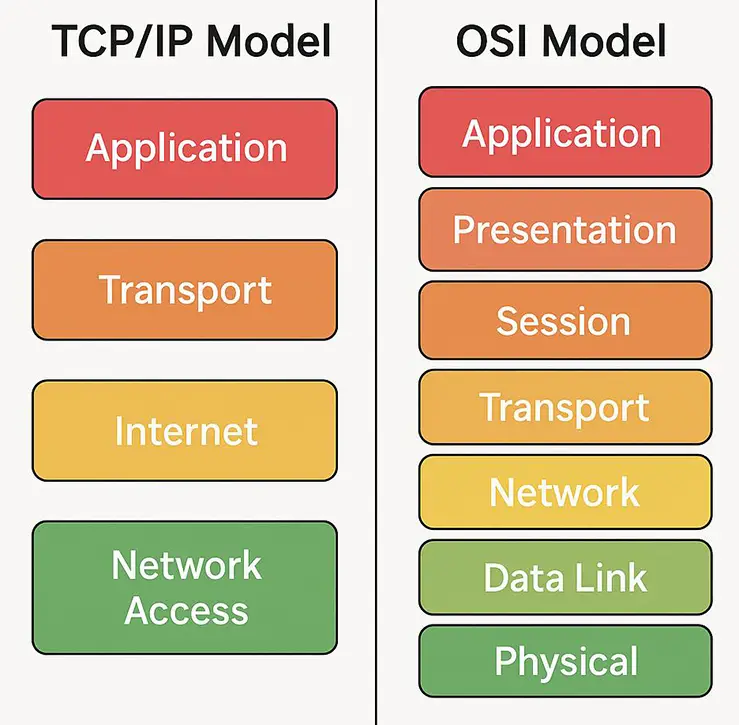Understanding TCP/IP Networking Concepts
TCP/IP (Transmission Control Protocol/Internet Protocol) is the foundation of modern networking. It defines how data is packaged, addressed, transmitted, routed, and received across interconnected networks. This lesson introduces the TCP/IP model, contrasts it with the OSI model, and explores the design principles that shaped today’s global Internet.
Learning Objectives
- Explain the layered structure of the TCP/IP protocol suite.
- Understand IP address classes, subnet masks, and how data moves between layers.
Everyday Protocols and the Need for Standards
Protocols govern communication-both human and digital. Just as people follow conventions when exchanging information, computers rely on well-defined rules to ensure interoperability. A group of related protocols forms a protocol suite, and the structure that defines how these protocols interact is called a reference model.
The TCP/IP architecture emerged from early ARPANET research to connect multiple, distinct packet-switched networks. Gateways (later called routers) translated between incompatible systems, allowing diverse networks to communicate. This “network of networks,” or internetwork, laid the groundwork for what we now call the Internet.
Reference Models: OSI vs. TCP/IP
While TCP/IP is a working set of protocols, reference models such as the OSI and TCP/IP models provide conceptual frameworks. They help engineers visualize data flow and standardize communication across systems.

Although TCP/IP can function without explicit reference to a model, these frameworks are essential for:
- Standardization: Establishing common terminology across vendors and systems.
- Design guidance: Clarifying responsibilities at each network layer.
- Education: Teaching network principles consistently.
- Troubleshooting: Allowing engineers to isolate issues by layer.
In practice, most networking devices-routers, switches, and operating systems-implement TCP/IP directly. However, understanding the model helps engineers diagnose issues and design resilient architectures. Using TCP/IP without knowing the model is like driving a car without understanding its engine-you can operate it, but you can’t easily repair it.
Network Security and Firewalls
Evolution of the Global Internet
The global Internet grew from decades of collaboration between researchers, engineers, and government agencies. The original ARPANET, developed by the U.S. Department of Defense’s DARPA, demonstrated how multiple networks could interconnect and remain stable even when parts of the system failed.
Major design goals included:
- Seamless interconnection between diverse networks.
- Reliable communication even if intermediary nodes fail.
- Flexible, scalable architecture for growth and innovation.
The TCP/IP model’s simplicity contributed to its success. By using packet switching and a connectionless internetwork layer, it achieved the robustness and scalability necessary for worldwide communication. Today’s Internet-spanning billions of devices-still reflects this layered, modular design.
Summary
TCP/IP remains the universal protocol suite for data exchange across networks. Its architecture emphasizes openness, fault tolerance, and interoperability. The model’s enduring relevance lies in its ability to adapt-from the original ARPANET to cloud, mobile, and IoT environments-while maintaining its core design principles.